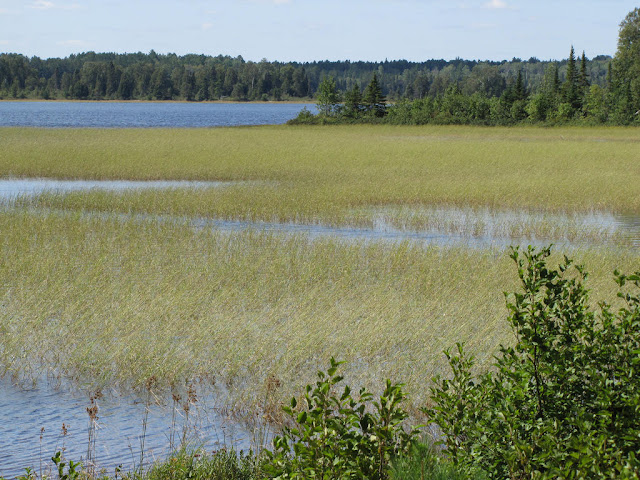In colonial American literature, the Huron tribe are usually the bad guys. This is most notable in "The Last of the Mohicans." The picture below is of Magua, the Huron villain, in the most recent version of the film.
"The Last of the Mohicans" is set in the French and Indian War in the late 1750's.
In a climactic scene, Magua leaves the Huron village to go west and join the the "Huron of the Lakes."
I was surprised to find a Sioux tie to the Huron. In the middle of the 1600's, about 100 years before the events portrayed in "The Last of the Mohicans" a group of Hurons from the Georgian Bay area of Lake Huron fled west from Iroquois attacks.
These Huron sought refuge among the Dakota Sioux in the Mississippi River region. It is reported by a French trader , Perrot, that they brought iron tools with them and the Sioux, who had not yet seen iron, viewed them as having supernatural powers.
After living in peace for several years, the Huron desired more Sioux lands and went to war against them. The Sioux pushed them back into Wisconsin, towards Lake Superior.
Perrot reported that the Huron sent war parties to attack the Sioux in their villages which were located in areas with nothing but lakes and marshes. He said they made good use of the terrain and lured the Huron into favorable terrain for attacks (on the Huron.)
The picture below is of a wild rice marsh off a large lake and the bottom picture is of a wild rice marsh. These are likely the typical scenes of conflict between the Sioux and Huron.
Perrot also noted that the Sioux were less cruel than the Huron until they saw how the Huron treated Sioux captives. Once again, the Huron appear to be the bad guys.
The outcome of this war appears to be that the Huron were pushed back east to the region of Mackinac Island.










